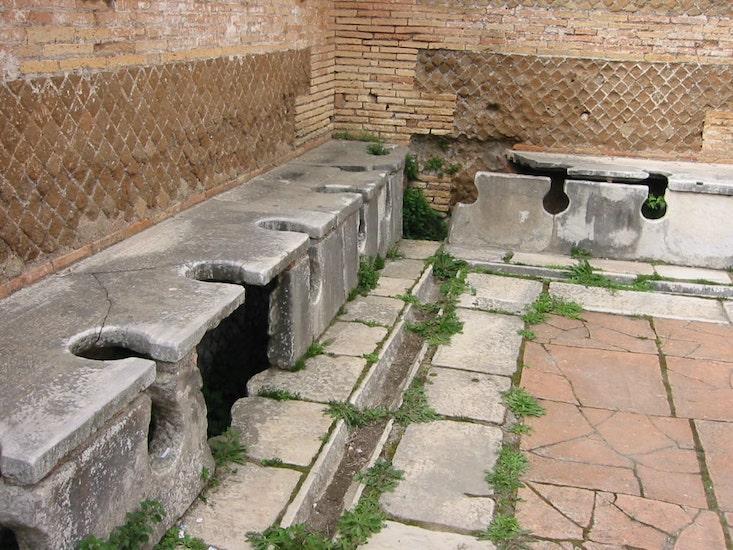I am surprised that more people don't talk about shit. I don't mean about one's daily bowel movements and whether or not one needs more fiber in the diet. Nope. I am interested in aspects of shit like in this post or this one, for instance. Remember the piss-pot? (Yep, there is more for any interested reader.)
So, yes, it is time to blog about shit again.
Imagine Rome about 2,000 years ago. How did people take care of their shit? For that matter, where did they pee?
These are genuinely interesting questions, if only one turned their attention away from the latest video of cats playing the piano!
Anyway, back to the Romans 2,000 years ago. Where did all their pee go?
As best we can tell from historic and archaeological data, ancient Romans peed in small pots in their homes, offices, and shops. When those small pots became full, they dumped them into large jars out in the street. Just like with your garbage, a crew came by once a week to collect those hefty pots of pee and bring them to the laundromat.They took them to the laundromat?
Why? Because ancient Romans washed their togas and tunics in pee!WTF! Holy shit!
So, why did the Romans wash their clothes in pee?
Human urine is full of ammonia and other chemicals that are great natural detergents. If you worked in a Roman laundromat, your job was to stomp on clothes all day long—barefoot and ankle deep in colossal vats of human pee.I decided I needed more details. The internet delivers:
If you’ve investigated the ingredients in your household cleaners, you may have noticed a prevalent ingredient: ammonia. As a base, ammonia is a useful cleanser because dirt and grease–which are slightly acidic–get neutralized by the ammonia. Even though early Europeans knew about soap, many launderers preferred to use urine for its ammonia to get tough stains out of cloth. In fact, in ancient Rome, vessels for collecting urine were commonplace on streets–passers-by would relieve themselves into them and when the vats were full their contents were taken to a fullonica (a laundry), diluted with water and poured over dirty clothes. A worker would stand in the tub of urine and stomp on the clothes, similar to modern washing machine’s agitator.And you thought your job sucked! ;)
This photograph tells us a lot about how Romans shat (or is shitted?) back in the day:
Oh my!
Don't you want to know how they cleaned up after shitting? Read that essay and find out for yourself!
Why don't they teach such stuff in history classes? Maybe in a few years, I should offer a freshman seminar titled "Piss, Shit, and Fart--But Never Simultaneously" ;)
Our lives are so different from washing clothes in pee and shitting in the public with people all around.
So the next time you’re enjoying a morning constitutional, think about the fact that defecation and urination are more than biological functions; they are cultural activities that involve artifacts and technologies that change through time.Indeed. Thankfully!

No comments:
Post a Comment